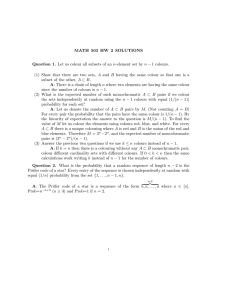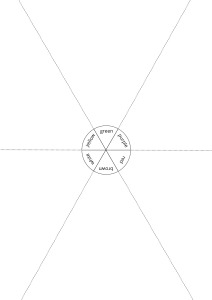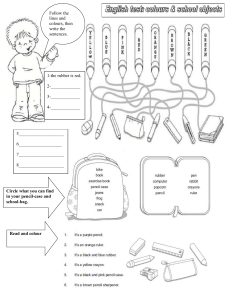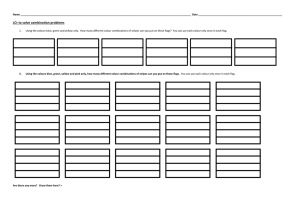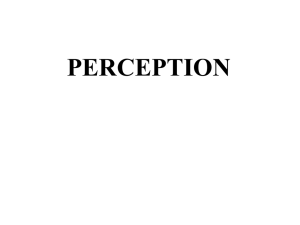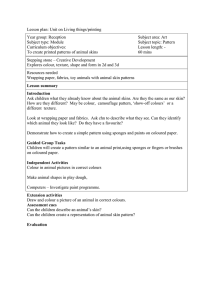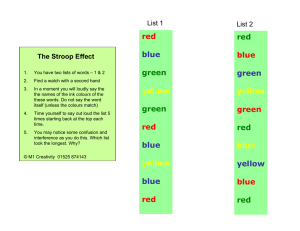MATH 503 HW 2
advertisement
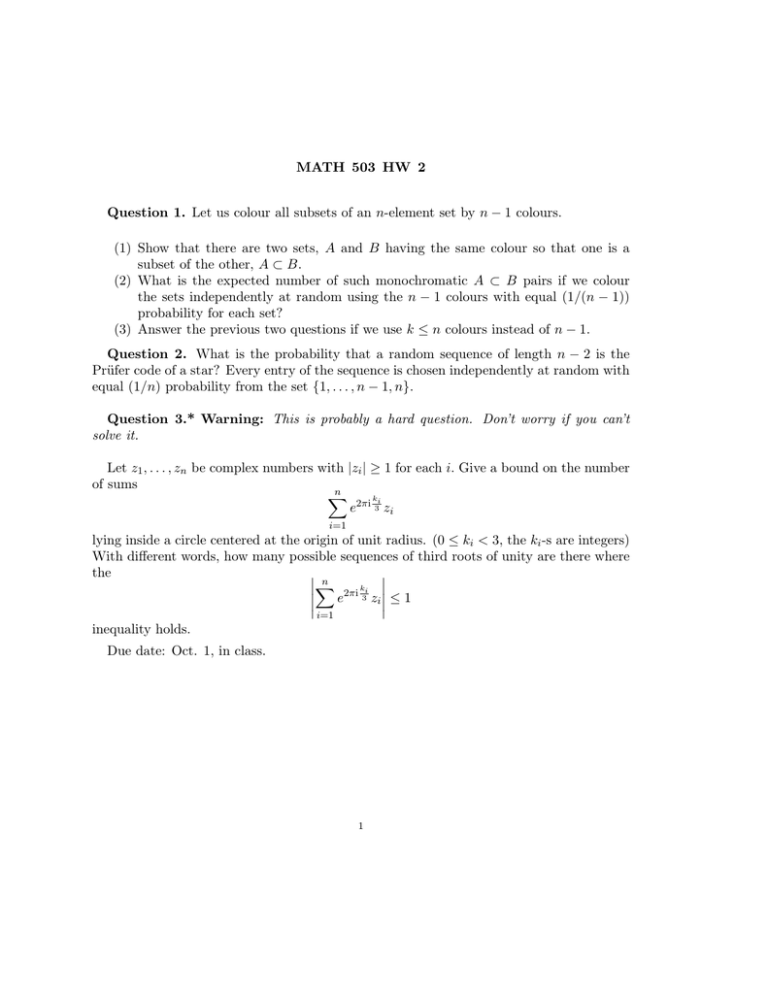
MATH 503 HW 2
Question 1. Let us colour all subsets of an n-element set by n − 1 colours.
(1) Show that there are two sets, A and B having the same colour so that one is a
subset of the other, A ⊂ B.
(2) What is the expected number of such monochromatic A ⊂ B pairs if we colour
the sets independently at random using the n − 1 colours with equal (1/(n − 1))
probability for each set?
(3) Answer the previous two questions if we use k ≤ n colours instead of n − 1.
Question 2. What is the probability that a random sequence of length n − 2 is the
Prüfer code of a star? Every entry of the sequence is chosen independently at random with
equal (1/n) probability from the set {1, . . . , n − 1, n}.
Question 3.* Warning: This is probably a hard question. Don’t worry if you can’t
solve it.
Let z1 , . . . , zn be complex numbers with |zi | ≥ 1 for each i. Give a bound on the number
of sums
n
X
ki
e2πi 3 zi
i=1
lying inside a circle centered at the origin of unit radius. (0 ≤ ki < 3, the ki -s are integers)
With different words, how many possible sequences of third roots of unity are there where
the
n
X
k
2πi 3i zi ≤ 1
e
i=1
inequality holds.
Due date: Oct. 1, in class.
1
